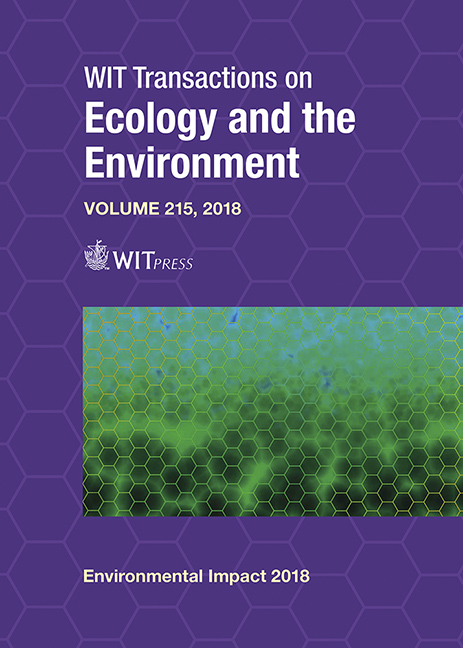FATE OF ATMOSPHERIC DUST FROM MINING ACTIVITIES IN NEW CALEDONIA AND THE IMPACT ON THE NICKEL CONTENT OF LICHEN
Price
Free (open access)
Transaction
Volume
215
Pages
10
Page Range
489 - 498
Published
2018
Paper DOI
10.2495/EID180441
Copyright
WIT Press
Author(s)
ESTELLE ROTH, EMMANUEL RIVIERE, JEREMIE BURGALAT, NADIA NGASSA, YAYA DEMBELE, MARIAM ZAITER, ABDEL CHAKIR, CAMILLE PASQUET, RONAN PIGEAU, PEGGY GUNKEL-GRILLON
Abstract
Nickel mining in New Caledonia proceeds in open pit mining. Therefore, bare soil surfaces submitted to wind blow and mining operation (earthwork, excavating, transport, etc.) are a source of particulate matter. These phenomena produce essentially coarse metal rich dusts which undergo regional atmospheric transport. This study aims to determine how the mining activities can impact the environment and the population in conjunction with the presence of particles in the atmosphere via the wind transport. In this work, Koniambo (KNS) is the target mine, a new plant and mining site created in 2010 in the north of New Caledonia. Particle matter with diameter below 10 μm (PM10) was measured in three sites surrounding the KNS mine to follow the population exposition to particulate matter. Air mass trajectory modelling was carried out to identify the sources of high PM10 events (above 50 μg/m3) in these locations and to elaborate a density map of air mass trajectories. Five mines appeared to contribute more or less to rich PM10 air masses: KNS, Népoui, Poro, Kouaoua and Monéo. A density map of air mass trajectories originating from these mines showed areas where the lower atmosphere is potentially impacted by mining dust. As lichens are known for their air pollution bioindication properties, lichens were sampled in areas with high, medium and poor trajectory densities and their Ni and Ti content were analyzed. A positive correlation between Ni/Ti ratio and trajectory densities was observed. Air mass trajectory modelling is thus a good tool to predict the potential environmental impact of mining dust.
Keywords
particulate matter, atmospheric modelling, bioindication, lichen, nickel, mining





